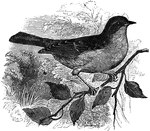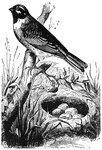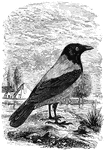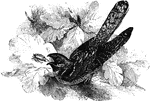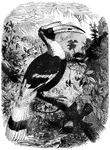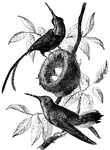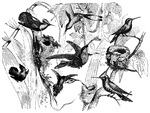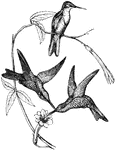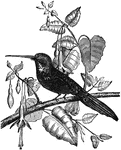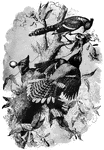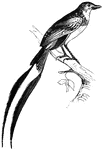
Tricolored Alectrurus
Native to South America, the tricolored alectrurus measures only six inches in length.
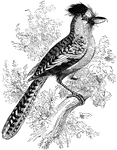
Batara
Taking its name from the Azara people of South America, the batara is the largest of the shrikes.
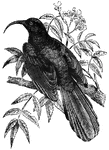
Namaqua Bee-Eater
The namaqua bee-eater, native to Western Africa. Its diet consists of insects, particularly bees and…
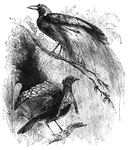
Bird of Paradise
A pair of birds of paradise, the emerald bird of paradise (above) and the superb bird of paradise (below).

Blackbird
Black with a yellow bill, the blackbird feeds mostly on larvae, snails, worms, insects, and fruits.
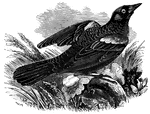
Red-Winged Blackbird
Also known as the red-winged oriole, the red-winged blackbird is known for gathering in immense flocks,…
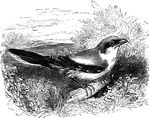
Great Butcher-Bird
Also known as the gray shrike, the great butcher-bird is known for securing its prey to thorns so that…

Flute-Playing Cassican
Noted for its voracious appetite, the flute-playing cassican has been known to eat small birds.
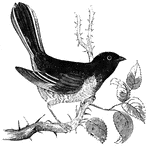
Chewink
Also known as the ground-robin or ground-finch, the chewink lives in thickets along the borders of woods.

Chough
Also known as the red-legged crow, the chough is about sixteen inches in length, feeding on insects,…
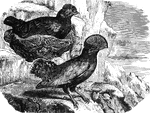
Cock-of-the-Rock
Approximately the size of pigeon, the cock of the rock has a distinctive crest of feathers arranged…

Cow-blackbird
A migratory bird, the cow-blackbird is notable among birds, for it does not build a nest.
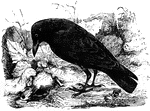
Carrion-Crow of Europe
The carrion-crow of Europe has been known to feed on decaying flesh, as well as young birds, shellfish,…

Rusty Crow-Blackbird
Resembling the crow-blackbird, the rusty crow-blackbird inhabits much the same region, but is less in…

Black-Banded Dacelo
The black-banded dacelo, found around the Cape of Good Hope. They are known for feeding on earthworms,…
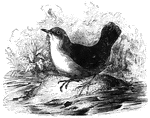
Black Dipper
The black dipper, also known as the European water-ousel, feeds on small shellfish and insects.

Nests of the genus Euplectes
Woven of grass, the nests of the genus Euplectes have an opening which faces down towards the water.…

Falconelle
Native to Australia, the falconelle is approximately the size of a sparrow, and resembles the great…

Bull Finch
Resembling a grosbeak, the bull-finch is common and England, and can be found in other regions of Europe…

Hawfinch
Feeding on pollen-stalks, laurel-berries, and the like, the haw-finch is also known as the common grosbeak…
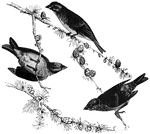
Purple Finch
The purple finch, also known as the American linnet, has a habit of erecting the feathers of its head…
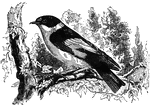
Collared Flycatcher
The collared fly-catcher, a bird which feeds on insects and the occaisional small vertebrate.
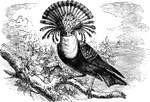
King Flycatcher
An impressive South American species of fly-catcher, with a transverse crest of reddish-fawn feathers.

Savannah Flycatcher
Found in the southern United States, the Savannah fly-catcher is notable for its long, forked tail.
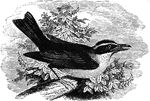
Spoonbill Tyrant Flycatcher
The spoon-bill tyrant fly-catcher has a large, thick bill, which it uses for feeding on butterflies.
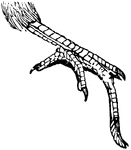
Foot of a Goat-Sucker
The foot of a goat-sucker, with a distinctively longer middle toe, believed to be used for either grasping…
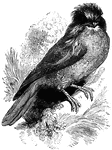
Gold River Goat-Sucker
A large bird, averaging about twenty inches in length when full-grown. It is native to Australia.
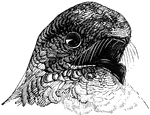
Head of a Goat-Sucker
Head of the goat-sucker. It bears some resemblence to an owl, with a large head and eyes, as well as…
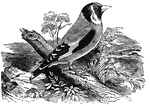
Common Goldfinch of Europe
Also known as the thistle-finch, it is often kept as a pet and taught to do tricks.
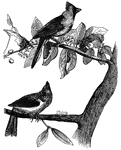
Cardinal Grosbeak
Noted for its beautiful song, the cardinal grosbeak is sometimes known as the virgin nightingale.

Green Grosbeak
Also known as the green finch, the green grosbeak frequents gardens, orchards, small woods, and cultivated…

Pine Grosbeak
Found in the northern parts of America and Europe, the pine-grosbeak feeds mostly on seeds.

Night Hawk
Found in America, Mexico and the West Indies, this species averages nine to ten inches in length and…
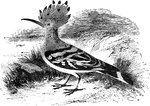
Hoopoe
Widely distributed over Africa, Asia, and Europe, the hoopoe has a distinctive crest of feathers on…

Supercolious Hummingbird
The supercolious hummingbird, noted for it's unusually large nest. It is native to Brazil.
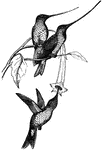
Hummingbirds
A group of humming birds with particularly long and narrow beaks, well-adapted for sipping nectar from…

Hummingbirds
Four humming birds, two of which are resting on a branch, while the other two cavort in the air above.
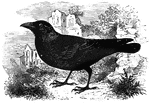
Jackdaw
The jackdaw is a nonmigratory bird, distributed throughout Middle Europe and Asia, as well as Great…
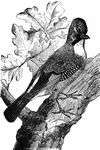
European Jay
The European jay is common through Europe, feeding on vegetables and fruits, as well as on insects and…
